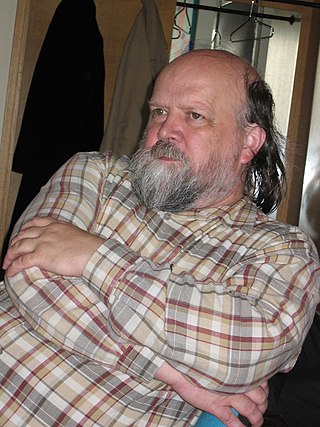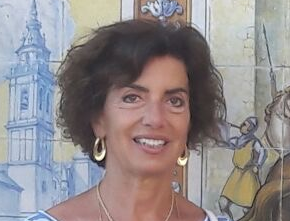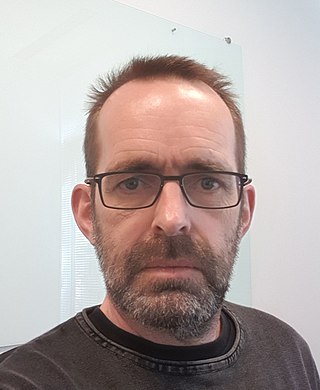Related Research Articles

Vladimir Batagelj is a Slovenian mathematician and an emeritus professor of mathematics at the University of Ljubljana. He is known for his work in discrete mathematics and combinatorial optimization, particularly analysis of social networks and other large networks (blockmodeling).

Bertrand Meyer is a French academic, author, and consultant in the field of computer languages. He created the Eiffel programming language and the idea of design by contract.

John Edward Hopcroft is an American theoretical computer scientist. His textbooks on theory of computation and data structures are regarded as standards in their fields. He is the IBM Professor of Engineering and Applied Mathematics in Computer Science at Cornell University, Co-Director of the Center on Frontiers of Computing Studies at Peking University, and the Director of the John Hopcroft Center for Computer Science at Shanghai Jiao Tong University.

Graph drawing is an area of mathematics and computer science combining methods from geometric graph theory and information visualization to derive two-dimensional depictions of graphs arising from applications such as social network analysis, cartography, linguistics, and bioinformatics.

Barbara Liskov is an American computer scientist who has made pioneering contributions to programming languages and distributed computing. Her notable work includes the development of the Liskov substitution principle which describes the fundamental nature of data abstraction, and is used in type theory and in object-oriented programming. Her work was recognized with the 2008 Turing Award, the highest distinction in computer science.
Hisashi Kobayashi is the Sherman Fairchild University Professor of Electrical Engineering and Computer Science, Emeritus at Princeton University in Princeton, New Jersey. His fields of expertise include applied probability; queueing theory; system modeling and performance analysis; digital communication and networks; network architecture; investigation of the Riemann hypothesis; and stochastic modeling of an infectious disease. He was a Senior Distinguished Researcher at the National Institute of Information and Communications Technology (NICT), Japan from September 2008 to March 2016.
Dorothea Wagner is a German computer scientist, known for her research in graph drawing, route planning, and social network analysis. She heads the Institute of Theoretical Informatics at the Karlsruhe Institute of Technology.

In graph drawing, a circular layout is a style of drawing that places the vertices of a graph on a circle, often evenly spaced so that they form the vertices of a regular polygon.

Johann (János) A. Makowsky is a Hungarian born and naturalized Swiss mathematician who works in mathematical logic and the logical foundations of computer science and combinatorics. He studied at ETH Zurich from 1967–73. He was a student in Zürich of Ernst Specker and Hans Läuchli in mathematical logic,, of Beno Eckmann and Volker Strassen (Algorithmics), and in Warsaw of Andrzej Mostowski and Witek Marek, where he spent 1972 as an exchange student. Makowsky held visiting positions at the Banach Center in Warsaw (Poland), Stanford University (USA), Simon Fraser University (Canada), University of Florence (Italy), MIT (USA), Lausanne University and ETH Zurich (Switzerland). He held regular positions at the Free University of Berlin and the Technion – Israel Institute of Technology where he was a full professor.
Takao Nishizeki was a Japanese mathematician and computer scientist who specialized in graph algorithms and graph drawing.
Tamara Macushla Munzner is an American-Canadian scientist. She is an expert in information visualization who works as a professor of computer science at the University of British Columbia (UBC).

Mohammad Taghi Hajiaghayi is a computer scientist known for his work in algorithms, game theory, social networks, network design, graph theory, and big data. He has over 200 publications with over 185 collaborators and 10 issued patents.
Daniel Mier Gusfield is an American computer scientist, Distinguished Professor of Computer Science at the University of California, Davis. Gusfield is known for his research in combinatorial optimization and computational biology.

Paola Velardi is a full professor of computer science at Sapienza University in Rome, Italy. Her research encompasses natural language processing, machine learning, business intelligence and semantic web, web information extraction in particular. Velardi is one of the hundred female scientists included in the database "100esperte.it". This online, open database champions the recognition of top-rated female scientists in Science, Technology, Engineering and Mathematics (STEM) areas.
Peter Bürgisser is a Swiss mathematician and theoretical computer scientist who deals with algorithmic algebra and algebraic complexity theory.

Melih Onuş was a Turkish mathematician, computer engineer and scientist. He represented Turkey in 1998 and 1999, at the International Mathematical Olympiad and was awarded a bronze and a silver medal, respectively. He died in the COVID-19 pandemic.
Mathias Payer is a Liechtensteinian computer scientist. His research is invested in software and system security. He is Associate Professor at the École Polytechnique Fédérale de Lausanne (EPFL) and head of the HexHive research group.

Matthias Grossglauser is a Swiss communication engineer. He is a professor of computer science at EPFL and co-director of the Information and Network Dynamics Laboratory (INDY) at EPFL's School of Computer and Communication Sciences School of Basic Sciences.
Andrej Mrvar is a Slovenian computer scientist and a professor at the University of Ljubljana. He is known for his work in network analysis, graph drawing, decision making, virtual reality, electronic timing and data processing of sports competitions.

Michael R. Berthold is a German computer scientist, entrepreneur, academic and author. He is a professor, and chair for bioinformatics and information mining at Konstanz University, and an honorary professor at Óbuda University. He is also the co-founder of KNIME, and is serving as a president and CEO of KNIME AG since 2017.
References
- ↑ "Prof. Dr. Ulrik Brandes", Directory board, ETH Zurich Turing Centre, retrieved 2021-08-14
- 1 2 "Ulrik Brandes", IEEE Xplore, IEEE, retrieved 2021-08-14
- ↑ Ulrik Brandes at the Mathematics Genealogy Project
- ↑ Review of Network Analysis: Methodological Foundations: Chris Arney, Mathematics and Computer Education;, ProQuest 1112265963